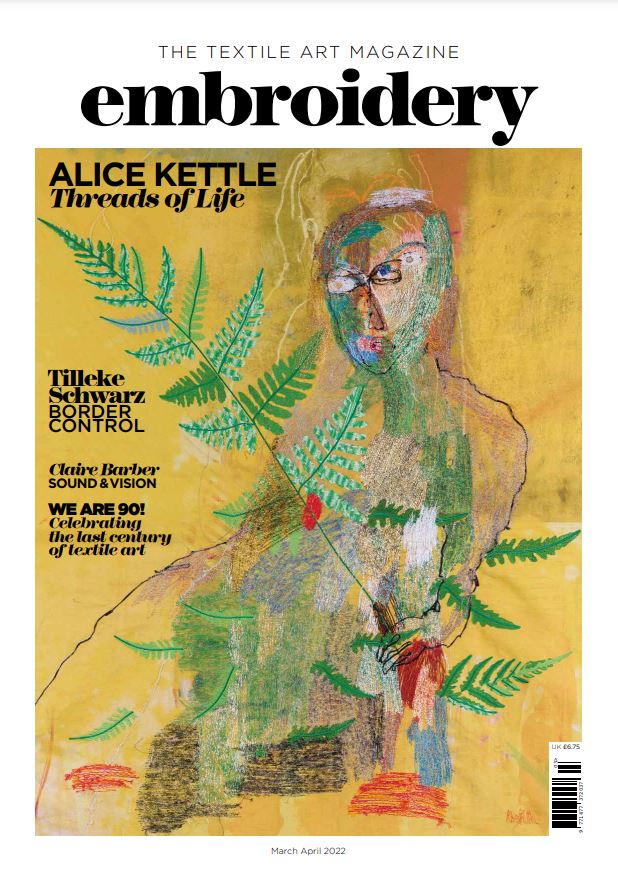March/April 2022
features
10 THE SEWING ROOM
Valerie Wartelle's studio is part of a 19th century textile mill in Halifax - perfect for felt making
14 THREADS OF LIFE
New work by Alice Kettle reflects the inner and outer changes shaping the artist's world
20 BORDER CONTROL
Tilleke Schwarz's hand embroidered works remain as distinctive as her eclectic subject matter
26 SOUND & VISION
Claire Barber's practice picks between the threads of the textile surface to capture fleeting sounds
32 HISTORY IN THE MAKING
Launches in 1932, Embroidery magazine celebrates 90 years of championing textiles as art
48 SASHIKO STORIES
We call it visible mending but in Japan, Sashiko and Boro have a long history and fascinating history
52 BLUE DYE THINKING
Step inside The Society of Dyers and Colourists' Collection at Bradford College Textile Archive

